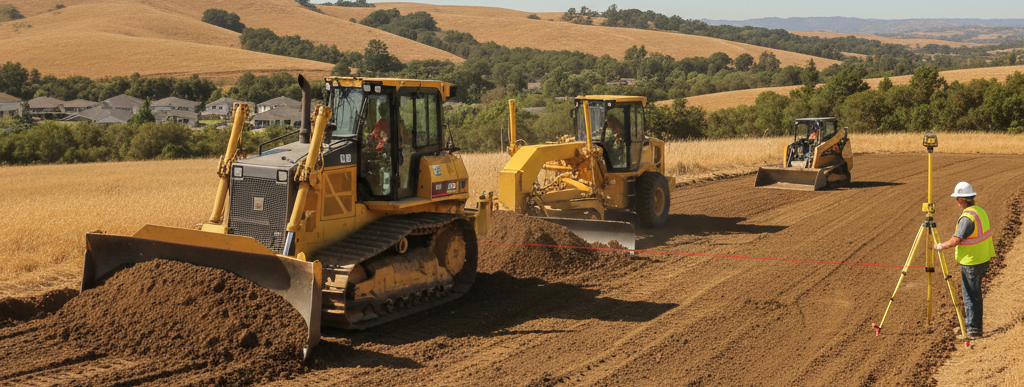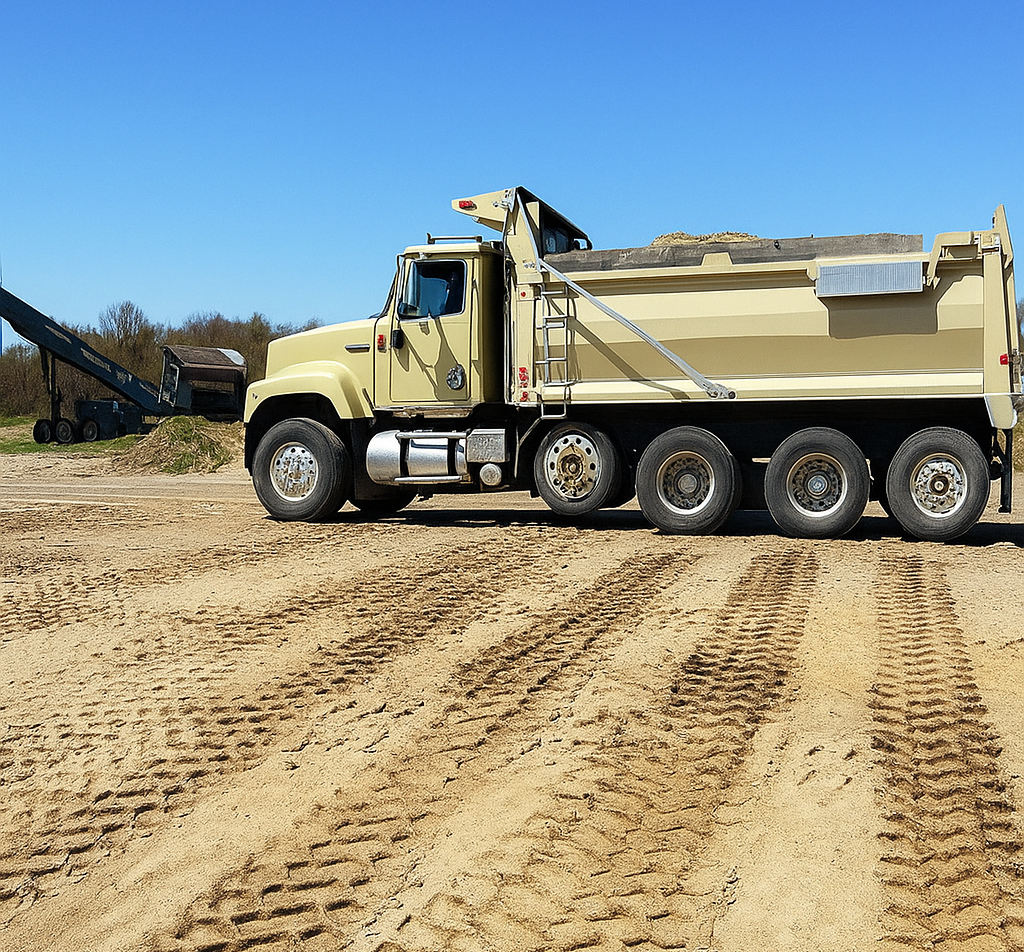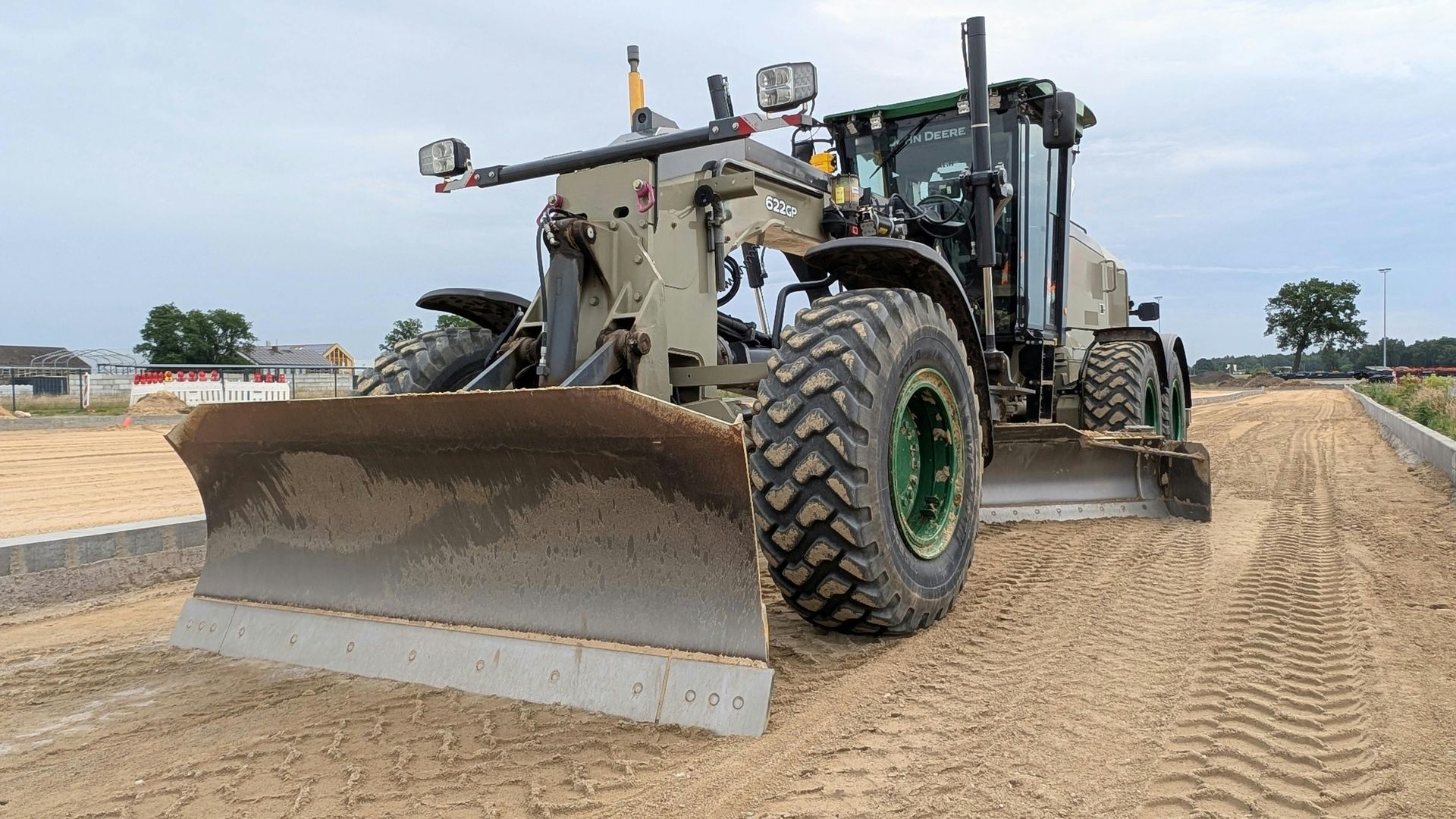
Grading vs. Leveling: Understanding the Nuances of Land Preparation throughout Southern MD, MD, DC & VA
When it comes to preparing your land for a new project, you've likely heard the terms "grading" and "leveling." While often used interchangeably, these two processes have distinct goals and impacts on your property. At Bay Area Land Services, we understand the critical differences and how each plays a vital role in successful land development.

What is the Difference Between Grading and Leveling?
Land Leveling focuses on creating a perfectly flat and even surface. Imagine a billiard table – that's the ideal outcome of leveling. This process is crucial for projects where a uniform elevation is paramount, such as:
- Patios and walkways: Ensuring a stable and trip-hazard-free surface.
- Sporting courts: Providing a consistent playing field.
- Foundations for sheds or small structures: Preventing uneven stress on the structure.
- Agricultural fields: Promoting uniform irrigation and crop growth.
Land Grading, on the other hand, involves shaping the land to achieve specific slopes and contours. The goal is not necessarily a flat surface, but rather a strategically designed landscape that manages water flow and supports the intended use of the land. Think of a gently sloped driveway leading to a house, or a landscape designed to divert rainwater away from a building. Grading is essential for:
- Drainage management: Directing water away from structures and preventing pooling.
- Erosion control: Reducing soil runoff on sloped areas.
- Foundation preparation for homes and commercial buildings: Creating a stable and properly drained base.
- Landscaping and aesthetic design: Creating varied elevations for visual appeal and functionality.
- Road and driveway construction: Ensuring proper water runoff and structural integrity.
In essence, leveling is about making the land uniformly flat, while grading is about shaping it with intentional slopes to achieve specific functional or aesthetic outcomes.
How Does Land Grading Affect Drainage?
Land grading is perhaps most critical when it comes to drainage. Proper grading is the backbone of an effective drainage system, and without it, you can face a multitude of issues:
- Water accumulation: Poor grading can lead to puddles and standing water, creating breeding grounds for insects and potential damage to plant life and structures.
- Foundation damage: Water pooling around a foundation can seep into cracks, leading to structural damage, mold growth, and costly repairs.
- Erosion: On sloped properties, improper grading can accelerate soil erosion, washing away valuable topsoil and potentially damaging neighboring properties.
- Saturated soil: Continuously wet soil can negatively impact plant health, making it difficult for root systems to thrive.
Through strategic grading, Bay Area Land Services can create gentle slopes that direct rainwater away from your home, garden, and other structures, into designated drainage areas or public storm drains. This protects your property from water damage, preserves your landscaping, and helps maintain the structural integrity of any existing or future constructions.

What Factors Influence the Cost of Grading and Leveling?
The cost of land grading and leveling can vary significantly based on several factors:
Size of the area: Larger areas naturally require more time, labor, and fuel.
Current topography: Heavily sloped or uneven land will require more extensive work than relatively flat parcels.
Type of soil: Rocky or compact soil is harder to work with than loose, sandy soil.
Depth of cut/fill: The amount of material that needs to be removed (cut) or added (fill) greatly impacts the project's scope.
Accessibility: Difficult-to-reach areas may require specialized equipment or more manual labor.
Permitting requirements: Local regulations often necessitate permits, which add to the overall cost.
Additional services: This could include excavation, demolition, tree removal, or installation of drainage systems.
At Bay Area Land Services, we provide detailed, transparent quotes after an on-site assessment to ensure you understand all aspects of your project's cost.
What Equipment is Used?
A successful grading and leveling project relies on the right tools for the job. Our team utilizes a range of heavy-duty equipment to achieve precise and efficient results:
- Excavators: Ideal for digging, trenching, and moving large amounts of earth.
- Skid Steers: Versatile machines perfect for smaller-scale grading, moving materials, and attachment use.
- Dozers: Essential for pushing large quantities of soil, creating rough grades, and clearing land.
- Graders: Specifically designed to create fine, precise slopes and smooth surfaces.
- Compactors/Rollers: Used to compact soil, creating a stable and durable base for foundations or surfaces.
- Laser Leveling Equipment: For achieving pinpoint accuracy in determining elevations and slopes.
Choosing the right equipment, combined with the expertise of our skilled operators, ensures that your land is prepared to the highest standards.
Whether you're planning a new construction, landscaping a yard, or addressing drainage issues, understanding the difference between grading and leveling is the first step towards a successful project. Contact Bay Area Land Services today for a consultation and let our experienced team help you prepare your land for its next chapter.

Frequently Asked Questions (FAQs) about Grading, Land Leveling, and Drainage in Maryland, Virginia and DC
What is the difference between Land Grading and Land Leveling?
While often used interchangeably, they have distinct goals:
Land Leveling focuses on creating a perfectly flat and even surface, similar to a billiard table. This is crucial for projects like patios, walkways, small structure foundations, and sporting courts.
Land Grading involves shaping the land with intentional slopes and contours. The goal is to manage water flow, direct it away from structures, prevent erosion, and create a stable, properly drained base for larger projects like homes and commercial buildings.
Why is proper Land Grading so critical for my property?
Proper grading is the foundation of effective drainage and protection for your property. Without it, you risk:
Foundation Damage: Water pooling around structures can lead to expensive repairs and mold growth.
Water Accumulation: Poor slopes cause puddles and standing water, attracting insects and harming plant life.
Erosion: On sloped terrain, improper grading can accelerate the washing away of valuable topsoil.
Strategic grading protects your property from water damage and preserves its structural integrity.
What types of projects require Land Leveling or Grading?
These services are essential for a wide range of projects, including:
- Site Preparation for new homes or commercial buildings.
- Construction of roads and driveways to ensure proper runoff.
- Installation of patios, decks, or sidewalks.
- Preparing land for agricultural fields or large landscaping designs.
- Implementing drainage solutions to redirect water flow.
What factors influence the cost of a grading or leveling project?
The cost is determined by several factors, which is why we offer a detailed, transparent quote after an on-site assessment:
Size of the Area: Larger areas require more time and resources.
Current Topography: Heavily sloped or uneven land requires more extensive work ("cut/fill").
Soil Type: Rocky or compact soil is more challenging to work with than loose soil.
Accessibility: Difficult-to-reach areas may increase labor and equipment costs.
Additional Services: The need for demolition, tree removal, or full drainage system installation will affect the total cost.
What kind of equipment do you use for grading and leveling?
We use specialized, heavy-duty equipment to ensure precision and efficiency, including:
Excavators for large-scale digging and earth movement.
Dozers for pushing large quantities of soil and establishing rough grades.
Graders for creating fine, precise slopes and smooth surfaces.
Skid Steers for versatile, smaller-scale work and material handling.
Laser Leveling Equipment for achieving pinpoint accuracy in elevations and slopes.

